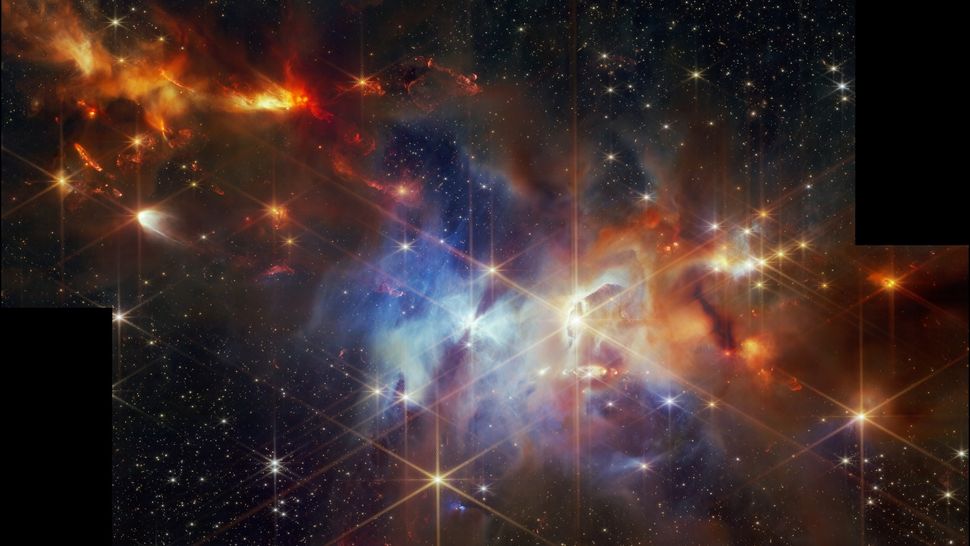Science
Related: About this forumSpace photo of the week: James Webb telescope catches baby stars roaring to life
By Jamie Carter
published 9 hours ago
A new image of the Serpens Nebula captured by the James Webb Space Telescope shows that when clouds collapse to form stars, all of those stars spin in the same direction.

The Serpens Nebula as seen by NASA's James Webb Space Telescope. (Image credit: NASA, ESA, CSA, STScI, Klaus Pontoppidan (NASA-JPL), Joel Green (STScI))
What it is: The Serpens Nebula
Where it is: 1,300 light-years away, in the constellation Serpens
When it was shared: Aug. 12, 2024
Why it's so special: This is a new image of an old favorite, the Serpens Nebula, where a cloud of gas and dust is lit up by starlight. Using its infrared capabilities, the James Webb Space Telescope (JWST) now reveals the source of that light: newborn stars.
The place to look in this image, taken with JWST's Near Infrared Camera, is the top-left corner. The bright-red streaks are jets of gas from newborn stars smacking into the surrounding gas and dust, creating shock waves. Crucially, they all slant in the same direction.
That's important because it provides evidence for the theory that when clouds of dust and gas collapse to form stars, all of those stars spin in the same direction. The trouble is, before JWST was around to observe in the infrared — to pierce thick clouds of dust and gas — it wasn't possible to see newborn stars or their jets in optical wavelengths, so it was impossible to confirm that theory.
"Astronomers have long assumed that as clouds collapse to form stars, the stars will tend to spin in the same direction,' said Klaus Pontoppidan, principal investigator at NASA's Jet Propulsion Laboratory in Pasadena, California. "However, this has not been seen so directly before. These aligned, elongated structures are a historical record of the fundamental way that stars are born."
Serpens is a reflection nebula, a cloud of gas and dust that does not create its own light but reflects light from stars close to or within it. All traces of color you see in this image — as filaments and wisps — are reflected starlight from newborn stars. Orange denotes where dust is in front of the reflected light.
More:
https://www.livescience.com/space/astronomy/space-photo-of-the-week-james-webb-telescope-reveals-spinning-baby-stars
JoseBalow
(5,170 posts)The universe is amazing! ![]()
Such perfectly-aligned outflows have never been seen before, and are highly unlikely to be the result of random chance. According to the researchers, it's likely that the group of 12 jet-spouting stars formed around the same time as each other, and along the same dense filament of gas. A powerful magnetic field defines the boundaries of this star-forming filament, and may also be responsible for directing the angle of the protostellar jets seen spewing there. Over time, this effect weakens as interactions with other objects slightly sway the spin axes of individual stars, redirecting the jets. This drift over time could explain why astronomers have never seen such perfect alignments before.
lastlib
(24,911 posts)This is just amazing! Why I f**king love science!